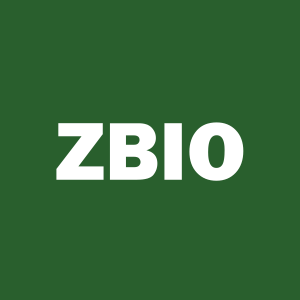Zenas BioPharma Announces Positive Results from Phase 2 MoonStone Trial of Obexelimab in Relapsing Multiple Sclerosis
Rhea-AI Summary
Zenas BioPharma (Nasdaq: ZBIO) announced positive Phase 2 MoonStone results for obexelimab in relapsing multiple sclerosis on October 27, 2025. Obexelimab met the primary endpoint with a 95% relative reduction in new gadolinium-enhancing T1 lesions versus placebo over weeks 8 and 12 (p=0.0009), with adjusted mean new GdE T1 lesions per scan of 0.01 vs 0.23. The drug also significantly reduced new/enlarging T2 lesions. Safety was consistent with prior trials, including infections and hypersensitivity, most commonly mild injection-site reactions. Zenas expects 24-week MoonStone data in Q1 2026 and additional toplines from INDIGO (IgG4-RD) and SunStone (SLE) in late 2025–mid 2026.
Positive
- Primary endpoint met: 95% reduction in new GdE T1 lesions (p=0.0009)
- Adjusted mean new GdE T1 lesions 0.01 vs 0.23 (obexelimab vs placebo)
- Significant reduction in cumulative new/enlarging T2 lesions
- Near-complete suppression of new GdE T1 lesions by week 8
Negative
- Safety events included infections and hypersensitivity, with injection-site reactions most common
- Key clinical readouts on disability and 24-week durability are pending Q1 2026
News Market Reaction 12 Alerts
On the day this news was published, ZBIO gained 33.08%, reflecting a significant positive market reaction. Argus tracked a peak move of +41.3% during that session. Argus tracked a trough of -10.2% from its starting point during tracking. Our momentum scanner triggered 12 alerts that day, indicating notable trading interest and price volatility. This price movement added approximately $356M to the company's valuation, bringing the market cap to $1.43B at that time.
Data tracked by StockTitan Argus on the day of publication.
- Obexelimab met primary endpoint with a
WALTHAM, Mass., Oct. 27, 2025 (GLOBE NEWSWIRE) -- Zenas BioPharma, Inc. (“Zenas,” “Zenas BioPharma” or the “Company”) (Nasdaq: ZBIO), a clinical-stage global biopharmaceutical company committed to being a leader in the development and commercialization of transformative therapies for patients living with autoimmune diseases, today announced positive results from the Phase 2 MoonStone trial of obexelimab in Relapsing Multiple Sclerosis (RMS). Obexelimab met the primary endpoint, demonstrating a highly statistically significant
“These profound MoonStone trial results, including the near elimination of new GdE T1 lesions, provide strong evidence of the deep and sustained inhibitory mechanism of obexelimab and further validate the potential for obexelimab to become a meaningful therapy across multiple autoimmune diseases, including Immunoglobulin G4-Related Disease and Systemic Lupus Erythematosus, which are currently being evaluated by Zenas in Phase 3 and Phase 2 clinical trials,” said Lonnie Moulder, Founder and Chief Executive Officer of Zenas.
Near-complete suppression of new GdE T1 hyperintense lesions, which are markers of active inflammation, was observed with obexelimab by 8 weeks of treatment and was sustained through week 12. The adjusted mean number of new GdE T1 hyperintense lesions per scan in the obexelimab group was 0.01 (
“The observed clinical activity in the MoonStone trial, combined with obexelimab’s unique inhibitory mechanism of action, subcutaneous self-administration and tolerability profile, position obexelimab as a potential option to broadly address the pathogenic role of B cells in autoimmune diseases,” said Lisa von Moltke, M.D., Head of Research and Development and Chief Medical Officer of Zenas. “With these highly statistically significant data, we look forward to reporting 24-week data in the first quarter of 2026, which will include additional secondary and exploratory endpoints that may inform obexelimab’s potential impact on disability progression and help us determine next steps for future development of obexelimab in relapsing MS.”
Zenas also expects to report topline results from the obexelimab Phase 3 INDIGO trial in IgG4-RD around year-end 2025 and topline results from the Phase 2 SunStone trial in Systemic Lupus Erythematosus (SLE), mid-2026, as well as the 24-week MoonStone trial results in the first quarter of 2026. In addition, orelabrutinib, a potentially best-in-class, highly-selective central nervous system (CNS)-penetrant, oral, small molecule Bruton’s Tyrosine Kinase (BTK) inhibitor, which Zenas recently in-licensed from InnoCare Pharma Limited, is now being studied in a global Phase 3 clinical trial in patients with Primary Progressive Multiple Sclerosis (PPMS). Zenas also expects to initiate a global Phase 3 trial of orelabrutinib in patients with Secondary Progressive Multiple Sclerosis (SPMS) in the first quarter of 2026.
About Multiple Sclerosis
Multiple Sclerosis (MS) is a chronic, autoimmune-mediated disorder of the CNS. According to the Multiple Sclerosis International Federation, approximately 2.9 million people worldwide are currently living with MS. The disease disproportionately affects females, and its highest prevalence is observed in North America, Europe and Australia. MS develops when the immune system aberrantly targets the myelin sheath – the protective insulation surrounding axons in the brain, spinal cord and optic nerves – leading to inflammation, demyelination and axonal injury. This pathological cascade disrupts neuronal signal transmission and results in a heterogeneous range of clinical manifestations, including motor weakness, fatigue, and cognitive and visual disturbances. Over time, progressive neurodegeneration contributes to irreversible disability progression.
MS onset typically occurs between 20 and 40 years of age, making MS the leading cause of non-traumatic neurological disability in young adults. MS is categorized into three main subtypes, RMS, SPMS and PPMS; all three subtypes are associated with ongoing neuroaxonal loss from the earliest stages of the disease, even in the absence of overt clinical progression. Delays in diagnosis and treatment accelerate disability accumulation, reduce quality of life and increase socioeconomic burden. Consequently, early intervention with highly effective therapies is a key objective in disease management to slow or halt inflammatory and neurodegenerative processes and stop disability progression.
RMS is characterized by distinct episodes of new or worsening neurological symptoms (relapses), followed by partial or complete remission. Approximately
About the Phase 2 MoonStone Trial
The Phase 2 MoonStone trial, which enrolled 116 patients, is a randomized, double-blind, placebo-controlled trial, to evaluate the efficacy and safety of obexelimab in patients with RMS. The trial follows a standard design using magnetic resonance imaging (MRI) endpoints that have historically been highly predictive of successful outcome in large, randomized trials using an endpoint of annualized relapse rate in an RMS study population. After an initial screening period, patients were randomized 2:1 to receive either 250 mg of obexelimab or placebo via subcutaneous injection once weekly over a 12-week double-blinded treatment period. The primary endpoint is the cumulative number of new Gd-enhancing T1 hyperintense lesions over week 8 and week 12 as measured by brain MRI. Secondary and exploratory endpoints include using standardized assessments, imaging, and biomarkers to evaluate the impact on disease progression. Upon completion of the double-blinded phase, all patients enter a 12-week open-label period in which those previously on placebo transition to obexelimab treatment, while those originally assigned to obexelimab continue therapy. During this open-label period, secondary and exploratory endpoints will assess obexelimab’s clinical activity through week 24.
About Obexelimab
Obexelimab is a bifunctional monoclonal antibody designed to bind both CD19 and FcγRIIb, which are broadly present across B cell lineage, to inhibit the activity of cells that are implicated in many autoimmune diseases without depleting them. This unique mechanism of action and self-administered, subcutaneous injection regimen may broadly and effectively address the pathogenic role of the B cell lineage in chronic autoimmune disease.
Obexelimab has been evaluated in seven clinical trials in a total of 286 patients, including MoonStone, who received obexelimab either as an intravenous infusion or as a subcutaneous injection. Obexelimab was well tolerated and demonstrated clinical activity across these clinical trials. Zenas is conducting a fully enrolled Phase 3 trial in Immunoglobulin G4-Related Disease and Phase 2 trials for Relapsing Multiple Sclerosis and Systemic Lupus Erythematosus.
About Zenas BioPharma, Inc.
Zenas is a clinical-stage global biopharmaceutical company committed to becoming a leader in the development and commercialization of transformative therapies for patients living with autoimmune diseases. Our core business strategy combines our experienced leadership team with a disciplined product candidate acquisition approach to identify, acquire and develop product candidates globally that we believe can provide superior clinical benefits to patients living with autoimmune diseases. Zenas is advancing two late-stage, potential franchise molecules, obexelimab and orelabrutinib. Obexelimab, Zenas’ lead product candidate, is a bifunctional monoclonal antibody designed to bind both CD19 and FcγRIIb, which are broadly present across B cell lineage, to inhibit the activity of cells that are implicated in many autoimmune diseases without depleting them. We believe that obexelimab’s unique mechanism of action and self-administered, subcutaneous injection regimen may broadly and effectively address the pathogenic role of B cell lineage in chronic autoimmune disease. Orelabrutinib is a potentially best-in-class, highly selective CNS-penetrant, oral, small molecule BTK inhibitor. Orelabrutinib’s mechanism of action targets pathogenic B cells not only in the periphery but also within the CNS. Additionally, it directly modulates macrophages and microglial cells in the CNS, with the potential to address compartmentalized inflammation and disease progression in MS. Zenas’ earlier stage programs include a preclinical, potentially best-in-class, oral, IL-17AA/AF inhibitor, and a preclinical, potentially best-in-class, oral, brain-penetrant, TYK2 inhibitor. For more information about Zenas BioPharma, please visit https://zenasbio.com/ and follow us on LinkedIn.
Zenas BioPharma Forward-Looking Statements
This press release contains “forward-looking statements” which involve risks, uncertainties and contingencies, many of which are beyond the control of the Company, which may cause actual results, performance, or achievements to differ materially from anticipated results, performance, or achievements. All statements other than statements of historical facts contained in this press release are forward-looking statements. In some cases, forward-looking statements can be identified by terms such as “may,” “will,” “should,” “expect,” “plan,” “anticipate,” “could,” “intend,” “target,” “project,” “contemplate,” “believe,” “estimate,” “predict,” “potential” or “continue” or the negative of these terms or other similar expressions, although not all forward-looking statements contain these words. Forward-looking statements include, but are not limited to, statements concerning Zenas’s milestones, expectations and intentions, including the potential for obexelimab to become a meaningful therapy across multiple autoimmune diseases and to address the pathogenic role of B cells in autoimmune diseases, the timing of the initiation of, results and data from clinical trials, including timing of reporting topline results from the INDIGO trial, the timing of reporting 24-week topline results from the MoonStone trial, the timing of the reporting the topline results from the SunStone trial and the timing of initiation of the Phase 3 clinical trial of orelabrutinib in patients with SPMS; the potential benefits, development and commercialization of orelabrutinib and obexelimab; and expansion of the Zenas pipeline. The forward-looking statements in this press release speak only as of the date of this press release and are subject to a number of known and unknown risks, uncertainties and assumptions that could cause the Company’s actual results to differ materially from those anticipated in the forward-looking statements, including, but not limited to: the Company’s limited operating history, incurrence of substantial losses since the Company’s inception and anticipation of incurring substantial and increasing losses for the foreseeable future; the Company’s need for substantial additional financing to achieve the Company’s goals; the uncertainty of clinical development, which is lengthy and expensive, and characterized by uncertain outcomes, and risks related to additional costs or delays in completing, or failing to complete, the development and commercialization of the Company’s current product candidates or any future product candidates; delays or difficulties in the enrollment and dosing of patients in clinical trials; the impact of any significant adverse events or undesirable side effects caused by the Company’s product candidates; potential competition, including from large and specialty pharmaceutical and biotechnology companies, many of which already have approved therapies in the Company’s current indications; the Company’s ability to realize the benefits of the Company’s current or future collaborations or licensing arrangements and ability to successfully consummate future partnerships; the Company’s ability to obtain regulatory approval to commercialize any product candidate in the United States or any other jurisdiction, the risk that the data from our clinical trials is not sufficient to the satisfaction of the FDA or comparable foreign regulatory authorities to support the submission of a biologics license application or other comparable submission or to obtain regulatory approval for our product candidates for which we seek approval in the U.S. or elsewhere, and the risk that any such approval may be for a more narrow indication than the Company seeks; the Company’s dependence on the services of the Company’s senior management and other clinical and scientific personnel, and the Company’s ability to retain these individuals or recruit additional management or clinical and scientific personnel; the Company’s ability to grow the Company’s organization, and manage the Company’s growth and expansion of the Company’s operations; risks related to the manufacturing of the Company’s product candidates, which is complex, and the risk that the Company’s third-party manufacturers may encounter difficulties in production; the Company’s ability to obtain and maintain sufficient intellectual property protection for the Company’s product candidates or any future product candidates the Company may develop; the Company’s reliance on third parties to conduct the Company’s preclinical studies and clinical trials; the Company’s compliance with the Company’s obligations under the licenses granted to the Company by others, for the rights to develop and commercialize the Company’s product candidates; significant political, trade, regulatory developments, including changes in relations between the U.S. and China; risks related to the operations of the Company’s suppliers, many of which are located outside of the United States, including the Company’s current sole contract manufacturing organization for drug substance and drug product, WuXi Biologics (Hong Kong) Limited, which is located in China; and other risks and uncertainties described in the section “Risk Factors” in the Company’s Quarterly Report on Form 10-Q for the quarter ended June 30, 2025, as well as other information we file with the Securities and Exchange Commission. The forward-looking statements in this press release are inherently uncertain, speak only as of the date of this press release and may prove incorrect. These statements are based upon information available to the Company as of the date of this press release and while the Company believes such information forms a reasonable basis for such statements, such information may be limited or incomplete, and our statements should not be read to indicate that the Company has conducted an exhaustive inquiry into, or review of, all potentially available relevant information. Because forward-looking statements are inherently subject to risks and uncertainties, some of which cannot be predicted or quantified and some of which are beyond the Company’s control, these forward-looking statements should not be relied upon as guarantees of future events. The events and circumstances reflected in the forward-looking statements may not be achieved or occur and actual future results, levels of activity, performance and events and circumstances could differ materially from those projected in the forward-looking statements. Moreover, the Company operates in an evolving environment. New risks and uncertainties may emerge from time to time, and management cannot predict all risks and uncertainties. Except as required by applicable law, the Company does not undertake to publicly update or revise any forward-looking statements contained herein, whether as a result of any new information, future events, changed circumstances or otherwise.
The Zenas BioPharma word mark, logo mark, and the “lightning bolt” design are trademarks of Zenas BioPharma, Inc. or its affiliated companies.
Investor and Media Contact:
Argot Partners
Zenas@argotpartners.com








